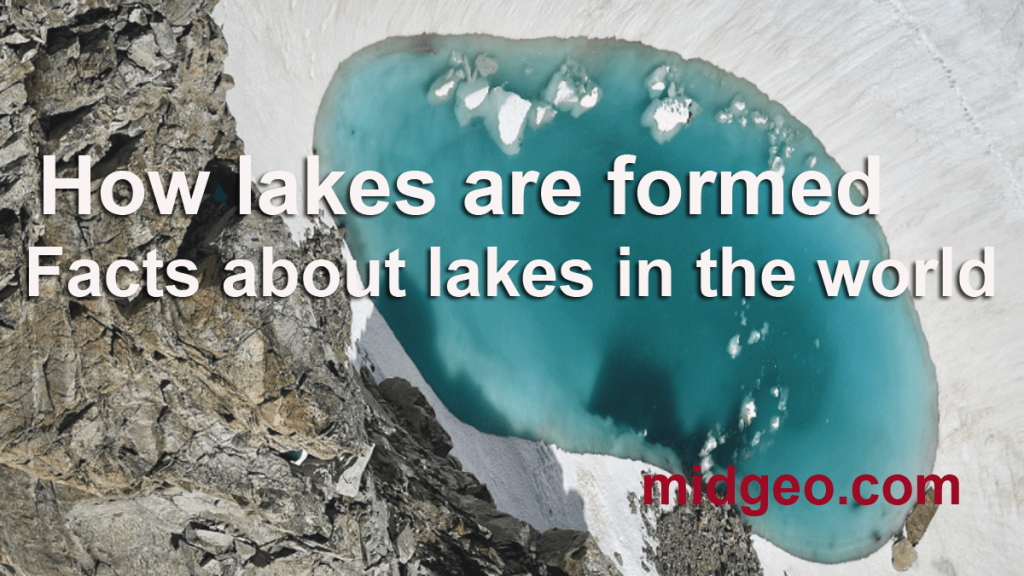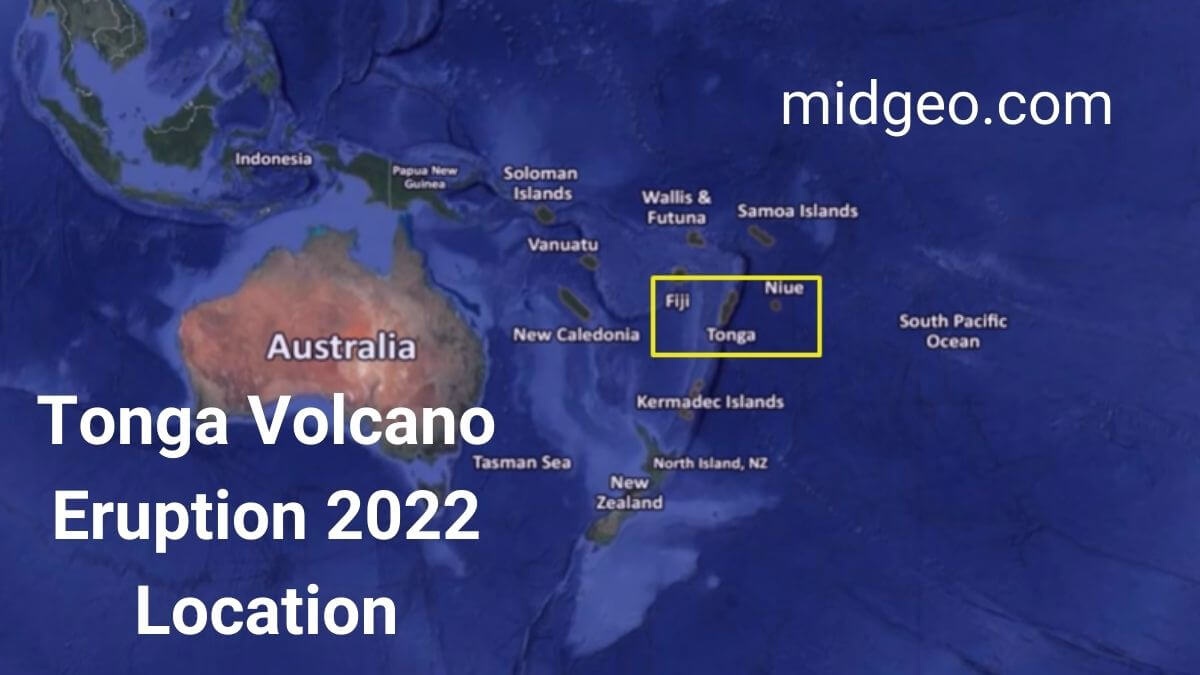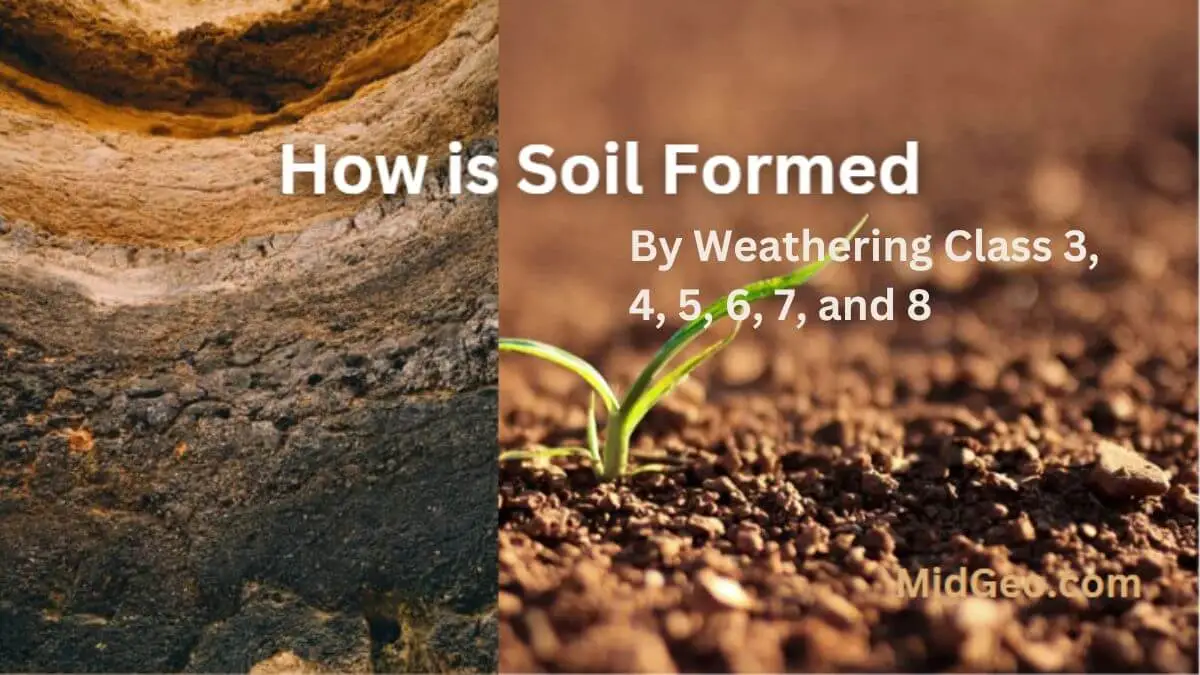
How lakes are formed? And important facts about lakes in the world. So lake is a kind of water body that surrounded by land. Millions of lakes scattered all over the world. If you look carefully at a world map it has 70% water. Only 1% continent’s water cover by the lake and less than 0.02% of the world’s water is contained.
First I’m going to tackle the question what is a lake? Then I’m going to discuss “How lakes are formed?”
A lake is a body of water bordered on all sides by land. Rivers and streams supplied and drained most lakes’ water. It receives water from rain, melting snow and ice, and underground water. That is to say, a lake is a low-lying area, often known as a basin.

The lakes do not have a fairly cool and big way and there are millions of significant lakes that have strong currents. That a lake varies widely and varies from the location.
Where do lakes found?
Lakes are found on all kind of continental environment-
- In mountain areas
- In deserts
- On plains
- near seashores
You can realize that by looking at saltwater sources of water lakes typically near coastal areas. But most Lake are fresh water.
You Can Read: What are Landforms? Substantial Types of Landforms, Formation, Example
There are both size lake small and large. There are two types of lakes: open and closed.
An open lake is one in which water departs a lake by a river or other outlet. The majority of freshwater lakes are open.
Evaporation causes water to evaporate from a lake, making it a closed lake. Lakes that have been closed for a long time frequently become saline or salty. This is due to the fact that when water evaporates, it leaves behind a solid substance, mostly salt.
How lakes are formed?
Lakes, as previously said, are fundamentally basins. As a result, lakes and basins are formed by the continuous erosion of rivers and streams. When rivers flow consistently through a region, they remove an enormous amount of sediment, resulting in the formation of depression or basin.

Lakes are also formed because of tectonic activity, such as earthquakes, which lead to a landslide, resulting in the low ground.
Volcanoes also formed several lakes. Even glacial activity can contribute to the construction of a basin or lake once a volcano goes extinct and its crater fills with rain or melted snow.
With their sluggish progress, glaciers carve the entire landscape, which is eventually filled with water from both the sea and rivers, resulting in artificial lakes.
Lakes can also be formed by excavating land or constructing a dam over a river. These man-made lakes, also known as reservoirs, are used to keep water for agriculture, drinking, and industrial purposes.
A lake is a huge body of water that is bordered on all sides by land. When water finds its way into a basin, it forms lakes. Rain or underground water could be the source.
- 10 Importance of Geography in the World: Why Studying Geography Matters for Individuals and NationsThe Importance of Geography in the World Geography, often described as the “bridge between the natural and social sciences,” is one of the most important subjects in understanding our planet. It’s not …
- World Environment Day 2025: Date, Theme, and SignificanceWorld Environment Day 2025 is a day for the global community to take positive action on climate change, both online and off. It takes place on the 5th of June every year. We are calling on everyone to take action in their way. this week, look at what you can do in your own life …
- Relative vs. Absolute Location | Definition & ExamplesWhen it comes to understanding the geographical aspects of our world, two essential concepts play a significant role: relative and absolute location. As our global society becomes increasingly interconnected, knowing how to distinguish between these terms becomes crucial. In this article, we will go through the definitions and examples of relative and absolute location, helping …
It will come as a shock to you to learn that lakes require a constant supply of freshwater or they will dry up!
When Meteors crash with the Earth, lakes can form.
So, when a large bulging meteor hits with the earth’s surface, it’s not always awful!
Facts about lakes in the world
Lets know Facts about lakes in the world:
- The Dead Sea is a lake, not a sea. The name ‘Dead’ comes from the fact that it includes a lot of saltwater and no living thing can survive in it!
- Small lakes are sometimes referred to as ponds, whereas bigger ones are referred to as seas.
- The majority of lakes are small – 90 million lakes are smaller than two football fields.
- The Caspian Sea is the world’s largest lake, with a surface size of around 143 thousand square kilometers.
- While Russia’s Lake Baikal, which is nearly a mile deep, is the deepest lake, lakes are formed in a variety of ways. For example, retreating and melting glaciers can leave lakes in their wake, while plate tectonics or even water filling a volcano’s crater can also create lakes.
- Humans regularly dam rivers to create lakes for recreation or hydropower.
- On Earth, there are 117 million lakes, which cover 3.7 percent of the continent’s geographical area.
- The majority of lakes are low-lying; 85 percent are fewer than 1,600 feet (500 meters) above sea level.
- Freshwater scientists who research limnology can really identify the age of a lake. Although all lakes ultimately dry up as their basins overflow with sediment and other natural debris, this is the case.
Canada, Alaska, Russia, Finland, and Sweden, are home to the majority of the world’s lakes. Despite the fact that tropical countries have plenty of lakes, the northern countries have the most. This is due to the fact that there is just less land further south. Thanks to the geological positioning of continents, the Northern Hemisphere contains the majority of the world’s landmass.
In conclusion,
Lakes are Formed many ways sometimes cause natural sometimes made by people for their own necessary reason. I hope you found a clear idea about how lakes formed and facts about lakes in the world . If you like to know more, please feel free to comment on me below. Thanks.





